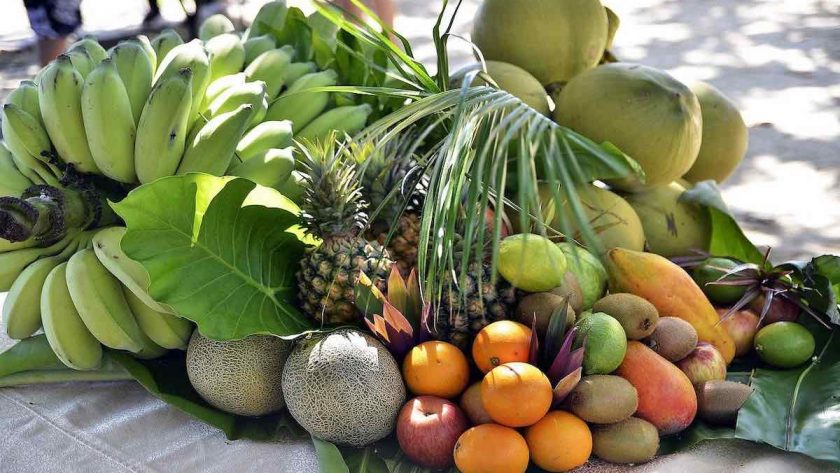Exploring the World of Exotic Fruits: A Guide to Discovering Unique Flavors
In today's culinary landscape, adventurous food enthusiasts are constantly seeking new flavors and experiences. One way to satisfy this craving is by exploring the fascinating world of exotic fruits. With their vibrant colors, intriguing shapes, and distinctive tastes, these fruits offer a delightful departure from the ordinary. In this article, we will take you on a journey to discover a variety of exotic fruits, highlighting their origins, nutritional benefits, and how they can add a burst of excitement to your culinary creations.
1. The Allure of Exotic Fruits:
Exotic fruits captivate our senses with their unusual appearances and flavors.
Their vibrant colors and unique textures make them visually appealing and highly Instagrammable.
These fruits can be a great conversation starter at social gatherings or a way to impress guests with their exoticness.

Exotic fruits in Southeast Asia
2. Origins of Exotic Fruits:
Exotic fruits hail from different corners of the globe, each with its own distinctive characteristics. Here are some regions renowned for their exotic fruit offerings:
2.1 Southeast Asia:
- Durian: Known as the "king of fruits," it has a strong odor but a rich, custard-like taste.
- Mangosteen: Often referred to as the "queen of fruits," it boasts a sweet and tangy flavor.
2.2 South America:
- Dragon Fruit (Pitaya): Its vibrant pink or yellow skin encloses white or red flesh speckled with tiny black seeds, delivering a mild sweetness.
- Acai Berry: This small, dark purple fruit is packed with antioxidants and has gained popularity for its health benefits.
2.3 Africa:
- Baobab Fruit: The tangy, citrusy flavor of this fruit is complemented by its high vitamin C content.
- Horned Melon (Kiwano): With its spiky orange skin and jelly-like green flesh, it offers a combination of sweet and tart flavors.
3. Nutritional Benefits:
Exotic fruits not only tantalize our taste buds but also provide a plethora of nutritional benefits. Here are a few examples:
3.1 Rich in Vitamins and Antioxidants:
Exotic fruits often contain high levels of vitamins, particularly vitamin C, which boosts our immune system and supports overall health.
Antioxidants present in these fruits help combat free radicals and protect against cellular damage.

Exotic fruits of South America
3.2 Source of Fiber:
Many exotic fruits are rich in dietary fiber, promoting healthy digestion and aiding in weight management.
3.3 Unique Nutritional Profiles:
Each exotic fruit offers a unique nutritional composition, providing a diverse range of benefits such as improved heart health, enhanced brain function, and increased energy levels.
4. Culinary Uses:
Exotic fruits can be used in various culinary applications, adding a burst of flavor and an element of surprise to dishes. Here are some creative ways to incorporate them into your recipes:
4.1 Smoothies and Juices: Blend exotic fruits with other ingredients to create refreshing smoothies and juices that are both delicious and nutritious.
4.2 Salads and Salsas: Add slices or cubes of exotic fruits to salads or create vibrant salsas to complement savory dishes with a sweet and tangy twist.
4.3 Desserts and Baked Goods: From tropical fruit tarts to exotic fruit-infused sorbets, these fruits can elevate desserts and baked goods to new heights.

Kola Nut of Africa
4.4 Exotic Fruit Pairings: Experiment with pairing exotic fruits with different ingredients to create intriguing flavor combinations. For example, try dragon fruit with coconut or papaya with lime for a tropical medley of flavors.
5. Availability and Storage Tips:
Exotic fruits may not be readily available in all regions, but they can often be found in specialty stores or online markets. When purchasing and storing these fruits, consider the following tips:
5.1 Freshness and Ripeness: Choose fruits that are firm, vibrant in color, and free from blemishes. Some exotic fruits, like mangoes, can be ripened at room temperature.
5.2 Proper Storage: To maintain freshness, store ripe exotic fruits in the refrigerator. However, some fruits, like bananas, should be kept at room temperature.
Conclusion: Exploring the world of exotic fruits opens up a treasure trove of unique flavors, textures, and nutritional benefits. From Southeast Asia to South America and Africa, each region offers its assortment of tantalizing fruits. Incorporating exotic fruits into your culinary repertoire adds a touch of excitement and allows you to embrace the wonders of global gastronomy. So, dare to try these exotic delights and embark on a flavorful journey that will awaken your taste buds to new possibilities.